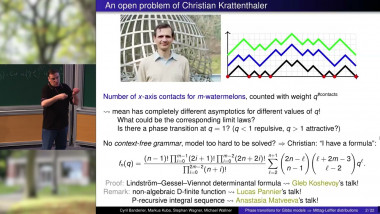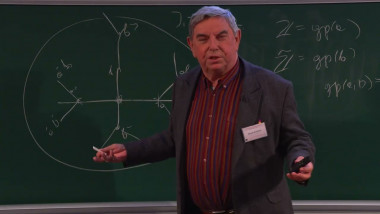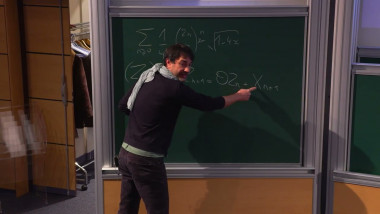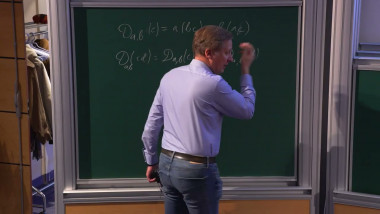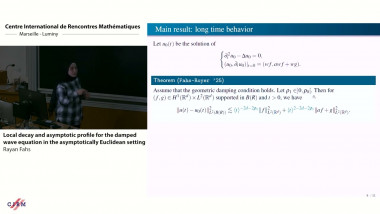Apparaît dans la collection : Pathwise Stochastic Analysis and Applications / Analyse stochastique trajectorielle et applications
Following the treatment of a class of quasi-linear SPDE with Sauer, Smith, and Weber, we approach Hairer's regularity structure $(\mathrm{A},\ \mathrm{T},\ \mathrm{G})$ from a different angle. In this approach, the model space $\mathrm{T}$ is a direct sum over an index set that corresponds to specific linear combination of (decorated) trees, and thus amounts to a more parsimonious parameterization of the solution manifold. Moreover, the same structure group $\mathrm{G}$ captures different classes of equations; depending on the class, different (sub)spaces $\mathrm{T}$ matter, which correspond to linear combinations of different types of trees.
In our approach to $\mathrm{G}$, we start from the space of tuples $(a,p)$ of (polynomial) nonlinearities $a$ and space-time polynomials $p$, which we think of parameterizing the entire manifold of solutions $u$ (satisfying the equation up to space-time polynomials) via re-centering. We consider the actions of a shift by a space-time vector $h\in \mathbb{R}^{d+1}$ and of tilt by space-time polynomial $q$ on $(a,p)$-space, where, crucially, the tilt by a constant is treated as a shift of the (one-dimensional) $u$-space. We consider the infinitesimal generators of these actions, and pull them back as derivations on the algebra of formal power series $\mathbb{R}[[\mathrm{z}_{k},\ \mathrm{z}_{\mathrm{n}}]]$ in the natural coordinates $\{\mathrm{z}_{k}}_{k\in \mathbb{N}_{0}}$ and $\{\mathrm{z}_{\mathrm{n}}}_{\mathrm{n}\in \mathbb{N}_{0}^{d+1}-\{\mathrm{O}}}$ of $(a,\ p)$-space. This defines a Lie algebra $\mathrm{L}\subset \mathrm{D}\mathrm{e}\mathrm{r}(\mathbb{R}[[\mathrm{z}_{k},\ \mathrm{z}_{\mathrm{n}}]])$ . Loosely speaking, the corresponding Lie group coincides with $\mathrm{G}^{²}$, but we follow an algebraic path to construct G.
As a group, $\mathrm{G}\subset(\mathrm{T}^{+})^{²}$ arises in the standard way from the Hopf algebra $\mathrm{T}^{+}$ that is obtained from dualizing the universal enveloping algebra $\mathrm{U}(\mathrm{L})$ . Here, gradedness and finiteness properties are needed for the well-posedness of the co-product $\triangle^{+}:\mathrm{T}^{+}\rightarrow \mathrm{T}^{+}\otimes \mathrm{T}^{+}$ and the antipode. The passage from $\mathbb{R}[[\mathrm{z}_{k},\ \mathrm{z}_{\mathrm{n}}]]$ to a smaller (linear) subspace $\mathrm{T}^{²}$ is needed for dualizing the module defined through $\mathrm{L}\subset$ End(T$²$) to obtain the co-module $\triangle:\mathrm{T}\rightarrow \mathrm{T}^{+}\otimes \mathrm{T}$. This yields the representation $\mathrm{G}\subset$ End(T). Both $\triangle$ and $\triangle^{+}$ satisfy the postulates of regularity structures, in particular the properties that intertwine $\triangle, \triangle^{+}$, and the family of re-centering maps $\mathcal{J}_{\mathrm{n}}:\mathrm{T}\rightarrow \mathrm{T}^{+}$. The latter relies on choosing a natural basis of $\mathrm{U}(\mathrm{L})$ , different from the standard Poincar\'{e}-Birkhoff-Witt basis, for dualization.
This is joint work with P. Linares and M. Tempelmayr.
